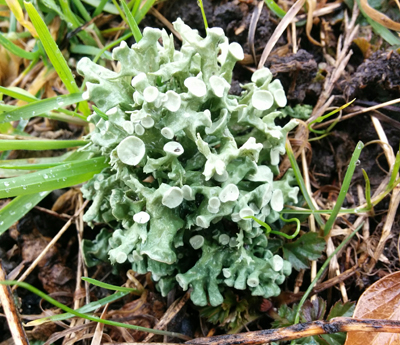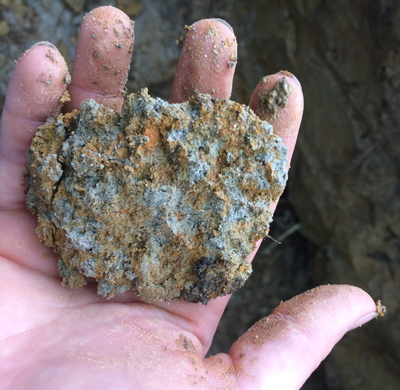HOW DO SOIL MICROBES INFLUENCE NUTRIENT AVAILABILITY?
Soil is rich with biological diversity and complexity that is not immediately apparent to the un-aided eye. Without a strong microscope, you wouldn’t know that there are hundreds of thousands, if not millions, of organisms in a handful of soil. Bacteria, archaea, algae, and fungi play critical roles in the growth and well-being of plants. I like to think about these millions of microbes under our feet as workers at recycling plants, mining operations, and refineries. They all have specific jobs helping make nutrients available for plants.

This fruticose lichen is a mixture of fungi and algae living in harmonious symbiosis. They are part of the soil life structure that recycles, mines and refines soils. Credit: Barret Wessel
Most soil microorganisms work in the “recycler” role. These are the decomposers that take dead plant and animal matter and break it down. If these recyclers didn’t do their job, the world would be a heap of unusable trash! Instead, recyclers use the organic matter to release the fundamental components that are used as food by plants.
The microbes that work in the recycling role use the organic carbon in the organic matter as an energy source (food). Recycling frees up nutrients like nitrogen, potassium, and phosphorus that are important to plant health. The importance of these recycling microbes cannot be overstated; they turn the world’s refuse into the building blocks of life. The maintenance of plant-life would be nearly impossible without these hard-working organisms.

Microorganisms are the work horses of nutrient cycling in soils; they decompose organic matter, form mutualistic relationships with plants, and contribute to soil structure. Here, iron reduction and re-oxidation features are evidence of hard working bacteria! Credit: Rachel LaCroix
The soil microorganisms that fill the “miner” role work on nearby rocks and minerals, not organic matter like the recyclers. Miner microbes make a kind of “bacterial goo” – scientifically called an “exudate”. The goo has a special pH and other key characteristics specially formulated to bind and extract nutrients like phosphorus, calcium, and potassium. All of these minerals are needed for healthy plants and good crop yields.
A specific group of these “mining” microorganisms is called mycorrhizal fungi. Mycorrhizal fungi form special symbiotic relationships with plant roots. They connect with plant roots to provide access to the freshly-released nutrients. In return, the plant roots provide the fungi with tasty, energy-rich carbon that the fungi use for growth in an otherwise desolate area of the soil environment.
The final type of microbes are the “refiners.” Refiner microbes, a class of bacteria called Rhizobia, are able to take nitrogen from the air and process it into a form usable by the plant. These “nitrogen-fixing” bacteria take inert nitrogen gas in the atmosphere (N2 gas) and convert it to the plant-available ammonia and other nitrogen-rich organic compounds.
Generally, refiners only live in special root formations called “nodules” of legume plants. Peanuts, alfalfa, clover, beans, and lentils, are all legumes. They can all form this symbiotic relationships with Rhizobia. The legumes house the Rhizobia and provide them with energy-rich compounds for food. Due to this special symbiotic relationship, legumes make for great cover-crops in agricultural settings. The dead tissues of legumes (re-introduced to the soil for future plant use by the recyclers!) are nitrogen-rich. This nitrogen-rich plant material can provide nitrogen to the next planted crop. This means that the farmer is not required to spend as much time, money, and energy applying nitrogen fertilizers.
So how do you make your soil hospitable to these microbes that have the potential to enrich your garden? In simple terms, you must “feed” the microbial communities in your soil. Recyclers use organic carbon in dead matter as an energy source. Cover crop residue, compost, or mulch are good sources of organic matter. To help the nitrogen-fixing “refiners”, plant some legumes, like clover or alfalfa,1 as a cover-crop. The Rhizobia will make the legume and surrounding soil nitrogen rich. Leave this cover crop on the soil after it dies to provide nitrogen-rich organic material, and start the cycle over!
Soil microbes play a vital role in the sustained growth of plants. They decompose and recycling nutrients bound in organic materials. They help access minerals in rocks large and small. And, they can even refine nitrogen from the air into a useful form for plants!
Answered by Caitlin Hodges, Pennsylvania State University
